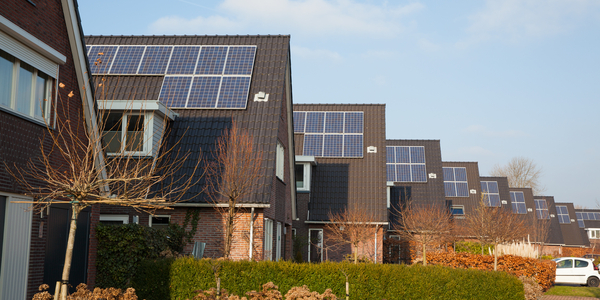
The surging industry of sustainable building materials shows no signs of stopping, much less slowing. With a diverse range of technology, environmental and construction-related companies focusing on the future of green as it relates to the building materials industry, the growth of these markets seems to be exponential. Some of the innovations are modest adjustments to existing products, while others are radical additions to the world of sustainable building materials. We’ve gathered what we believe to be four of the most promising and exciting concepts on the forefront of green construction and sustainable building materials.
Programmable Cement
Puns aside, cement is the foundation of the building materials world. As one of humanity’s most consumed substances, second only to water, concrete offers the greatest opportunity for the broadest environmental impact. Researchers at Rice University have discovered a way to program particle behavior in cement. This breakthrough is the first step in controlling cement kinetics, which influences the structural density of microstructures. This enhanced density could lead to stronger and longer-lasting cement products, leading the way to propelling cement as one of the more sustainable building materials.
Hardwood Cross-Laminated Timber
The use of cross-laminated timber, or CLT, is not new. The introduction of much stronger tulipwood, however, has elevated the versatility and impact CLT could have on the mass timber industry and sustainable building materials industry. From architectural art pieces like the Smile to tall wood buildings like the T3 Tower in Minneapolis, the incorporation of hardwood cross-laminated timber provides superior strength to concrete, and is largely considered to be aesthetically more pleasing. Produced from rapidly renewable feedstock, hardwood CLT can be manufactured in extra-large panels, which speaks to the strength and durability of these sustainable building materials.
Self-Healing Concrete
In the continuing efforts to decrease the environmental impact of concrete production, scientists are working toward a better solution to the world’s most-used building material. To be able to find a solution to concrete that would place it under the umbrella of sustainable building materials is perhaps the brass ring of the building materials industry. Dutch and Belgian researchers have possibly moved closer to grabbing that ring. With the incorporation of a living bacteria that produce limestone upon germination, concrete designed to incorporate this strain of bacteria could self-heal in a matter of weeks.
Solar Roofing
It may seem passé to include solar roofing on a list of upcoming trends in green construction and sustainable building materials, but with roofing being the fasting growing of the sustainable building materials designed for exterior use and a projected annual growth rate of 13.5% through 2020 for solar products, to not mention the future of solar roofing is to ignore perhaps the greatest opportunity in green construction. Innovator extraordinaire Elon Musk has promised to change both the solar energy and roofing industries with Tesla’s new solar roof panels that go beyond attaching to one’s roof to actually replacing existing roofing material.
The promise of bold new sustainable building materials brings with it the promise of unparalleled growth in the buildings material industry. It also suggests the industry may consider broadening its scope to incorporate more technologically-focused endeavors. The search consultants at Davalyn Corporation have experience and expertise to guide this transition from a staffing perspective. The influx of new technologies promises a surge in the need for fresh talent. A partnership with Davalyn Corporation ensures that as your focus turns toward the ever-evolving landscape of sustainable building materials, we can keep you staffed with the most dynamic and experienced candidates before they are lost to competitors.